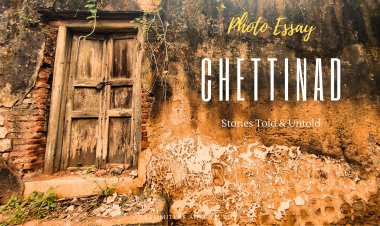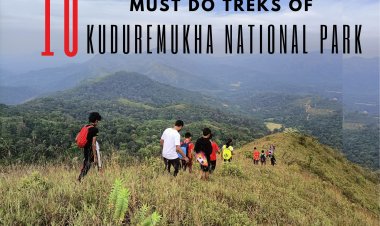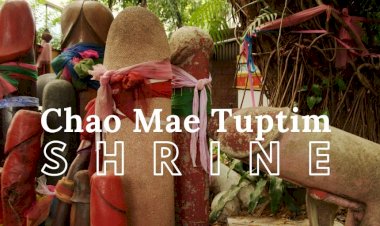Wangala - A Peek into 100 Drums Festival of Garo Hills Meghalaya
A harvest and cultural carnival to please the sun god saljong, popularly known as the 100 drum festival is celebrated annually by the Garo tribe. The festival is performed for 3 days. It is time to rejoice and pay respects to the almighty.A festival to exhibit the ethnic lifestyle and cultural identity of the region to the outer world.Here are the excerpts of the recent 46th annual event held in Garo hills of Meghalaya

An insight about this Blog
Escorting a group of like-minded travel enthusiasts I attended the 46 th Wangala Festival held on 12 November 22 in Garo Hills. A memorable visit it was indeed one to cherish for a lifetime. Though this was my fourth visit to the land of ethereal beauty Meghalaya. This time it was bit unique and offbeat - The remoteness was something like a raw experience. Below I have shared all the details about the 100 Drums Wangala Festival celebrated in the Garo Hills of Meghalaya, including all minute details, such as how to reach, where to stay, and other details.
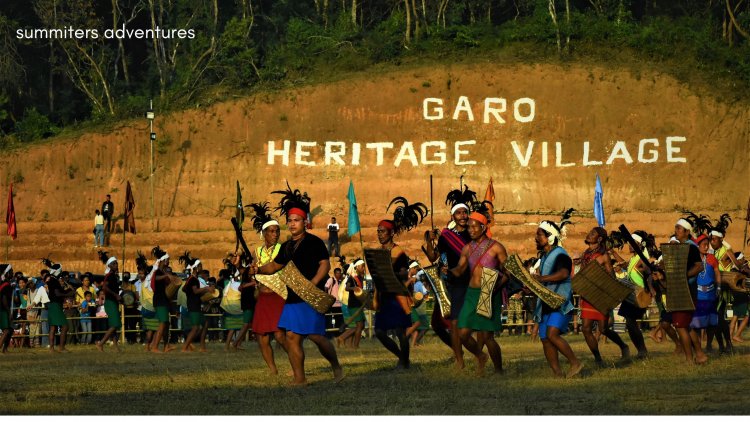 Over the decades, the beauty of the Khasi - Jaintia hills of Meghalaya never ceased to disappoint me and every visit was a pleasant experience. Ever since I heard about the Wangala festival held in Garo hills. Being captivated by it, I was tuned to the beat of 100 drums, and it echoed nonstop!
Over the decades, the beauty of the Khasi - Jaintia hills of Meghalaya never ceased to disappoint me and every visit was a pleasant experience. Ever since I heard about the Wangala festival held in Garo hills. Being captivated by it, I was tuned to the beat of 100 drums, and it echoed nonstop!
No reason to mention it, I was driven to know more. I did not find a pinch of information about the local festival anywhere in the media or in documents, with about 100 drums played together. I finally decided to go on an expedition to Garo hills, to know more and participate in the annual event.
My dream got wings, after speaking to Naturalist Dipu Marak of Tura. However, the condition of roads, connectivity, even basic amenities, and incessant rains overcoming them were a challenge. I did not stop there, my thirst to know more gradually escalated day by day. I started gathering more information and finally planned a trip into the last frontier – the Garo hills of Meghalaya.
All you need to know
- Wangala Festival - A bit of history and Significance
- Wangala Festival – My Personal experience
- Where is the Wangala Festival celebrated
- How to reach Tura
- Places to visit around Tura
- The ideal time to visit Tura
Wangala Festival - A bit of history and Significance
The Wangala is the most important annual post-harvest festival of the Garo tribe. The Northeast part of India is blessed with different ethnic groups each having its unique culture, customs, languages, and attire. The region is not only blessed with natural beauty, the people, and their culture here is too are unique and diverse. Like other states, agriculture is the backbone and major source of income in these states. Most of the festivities here are celebrated in conjunction with the harvest season. Wangala too is one such, thanksgiving post-harvest festival celebrated in the Garo Hills in the Western region of Meghalaya.
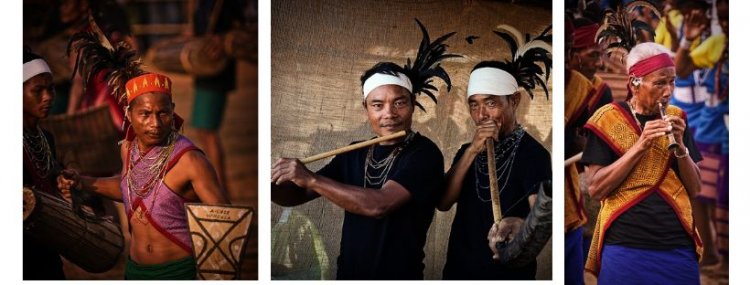
Wangala carnival is celebrated by the Garo tribe since time immemorial. It is a harvest festival held in honor of Saljong, the Sun god of fertility. The celebration of the Wangala Festival marks the end of a period of toil, which brings good output to the fields. It also signifies the onset of winter. A day ahead of the Wangala, the village Chieftain known locally as the “Nokma” performs a ritual called “Rugala”.While the second day is called ‘Sassat - Burning of incense to ward off evil and offering to gods performed by the priest.
As per tribal practices, the tribal headsmen sacrifice an animal to appease their sun god. The ritual is similar to offering the first and best of produce to the almighty.
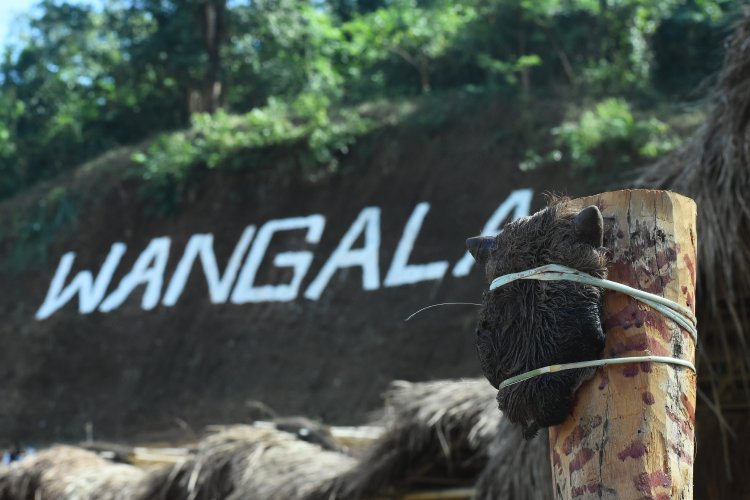
At Rugala, an offering of first-hand special rice beer - known as bitchi, cooked rice, and vegetables are offered to the Giver, Misi Saljong. On the next day, the Nokma performs the Sasat Soa ceremony (marked by the burning of incense) at the central pillar of his house to mark the beginning of the Wangala Festival.
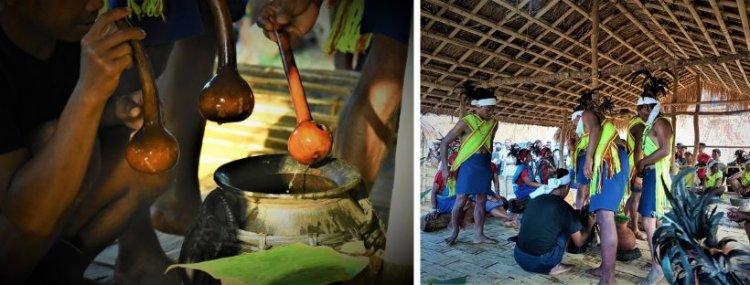
To preserve and promote the cultural identity of each state and showcase the ethnic tribe of North East, every state celebrates festivals to mark the event. Meghalaya too for the first time organized the Wangala dance performance which was held on December 6 and December 7, 1976, at Asanang, which is about 18 km from Tura.
Since then, the festival of 100 drums has been celebrated every year. The festival is celebrated for 3 days during the month of November and has grown over the years under the patronage of the Meghalaya Government.
This year, I was fortunate to visit the 46th “100 Drums Wangala Festival”. The Wangala Festival is the celebration of the culture of the Garos. People from different villages come together to celebrate their cultural uniqueness and portray it.
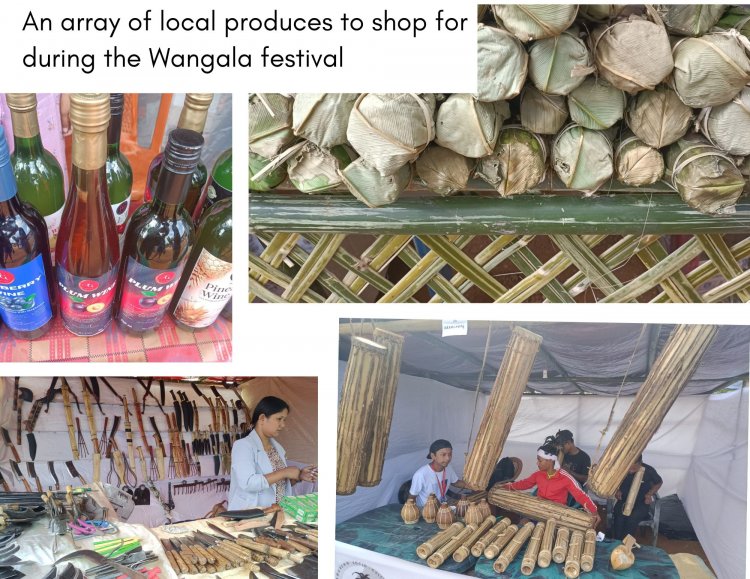
There are various programs, that happens including cultural competitions, music, martial arts, art – craft, local produce, local food, a drink made of sticky rice known as Menil Bitchi, colorful attire, and mainly dances by various groups.
In fact, Wangala is one such festival where dance plays a major part. The whole celebration takes place for 3 days at the Chibragre ground.
The popular dance forms performed during the festival, itself has certain subtle variations, the main motif being a queue of two parallel lines – one of the men and the other of women clad in their festive finest attire. Young and old join the festivities with equal enthusiasm. While the men beat the drums, the line moves forward in rhythmic accord. The ‘orchestra’ of men includes drums, gong, Percussion instruments, and flutes, punctuated by the sonorous music of a primitive flute made of buffalo horn. The chieftain leads the group holding a sword and shield. There is a notable sense of tempo in the performers, young and old, and the energetic dance leaves a lasting impression on the beholder.
The festival culminates on the 3rd day, with the beat of 100 drums and the 300 dancers dancing to the beat which is a grand live spectacle to watch.
Wangala Festival - My Personal Experience
After visiting a few offbeat places such as Wari Chora, Balpakram, and Nongkhnum in khasi hills border in South Garo hills we reached on the day of the festival. It was celebrated this year from 10th November to 12 November 2022. I could see the Garos dressed in their traditional attires all their Abono’s – Traditional huts ready to perform. Women clad in colorful attire and headgear sporting feathers. Men sporting a shield and sword, other members with 100 bifacial cylindrical drums known as dama
Participants from neighboring Villages of Rapdikgre, Chepagre, Sasatgre Sadolbra, Bangkapara, Gondenggre, Dalbenggre Wanokdamgre, and other villages take part in the festival.
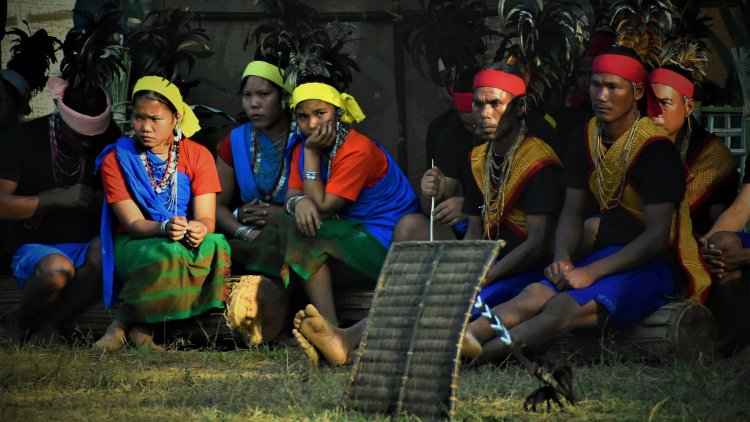
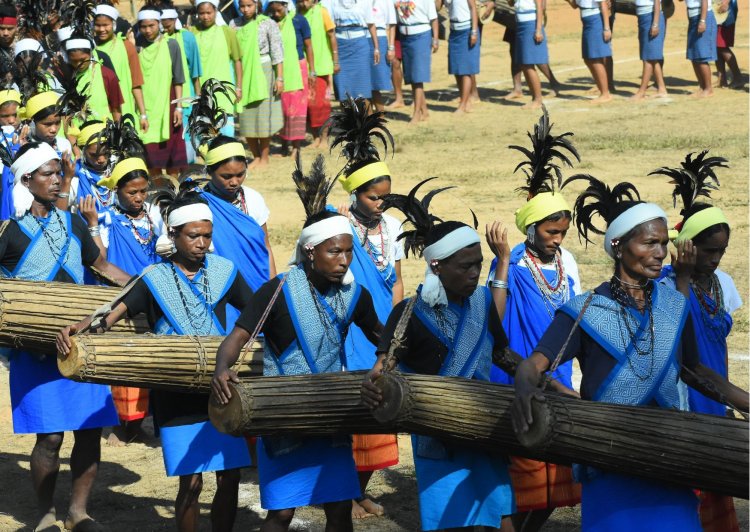
46th Wangala Harvest Festival of Garo's held on Nov 2022 / Meghalaya
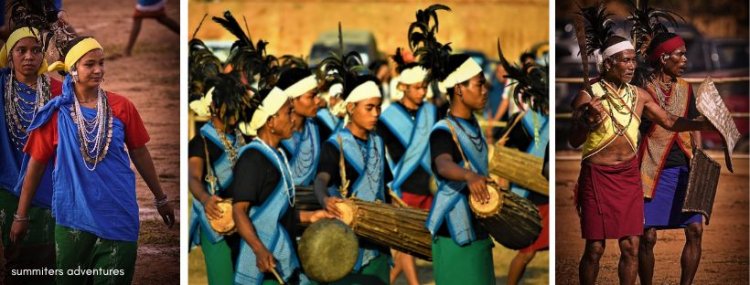
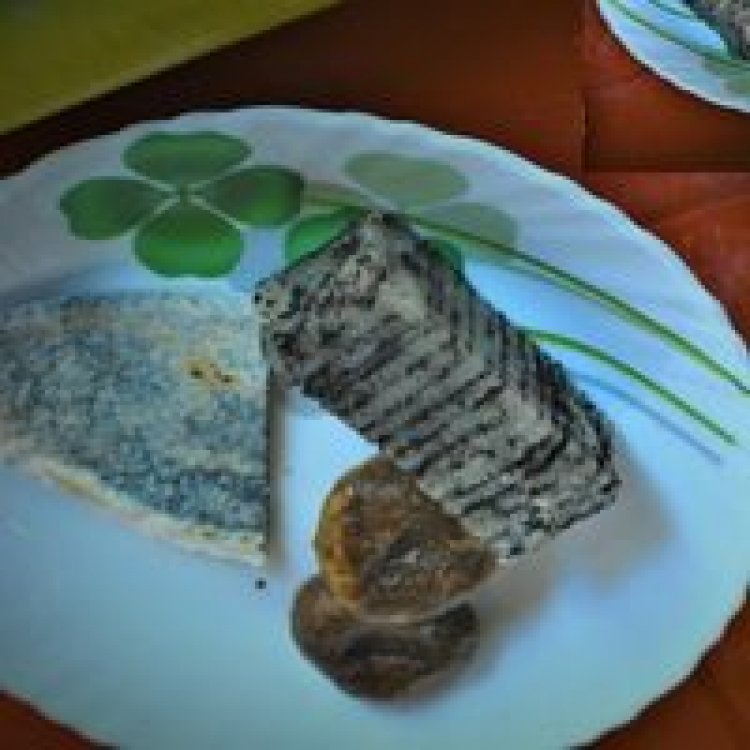
After the arrival of the Chief Guests, including the Tourism Minister of Meghalaya. After the address by the Chief Guest, there was a dance competition by five different groups. I moved around the circular ground photographing the whole event.
And finally, in the evening, it was time for the final performance – of the 100 drums dance. The chiefs of the 10 groups first came forward and then the drummers arrived followed by the dancers. The Chiefs started and moved forward which was soon followed by the beating of drums and percussion instruments in rhythm. The beat drums and wind instruments in unison reverberating and echoing around.
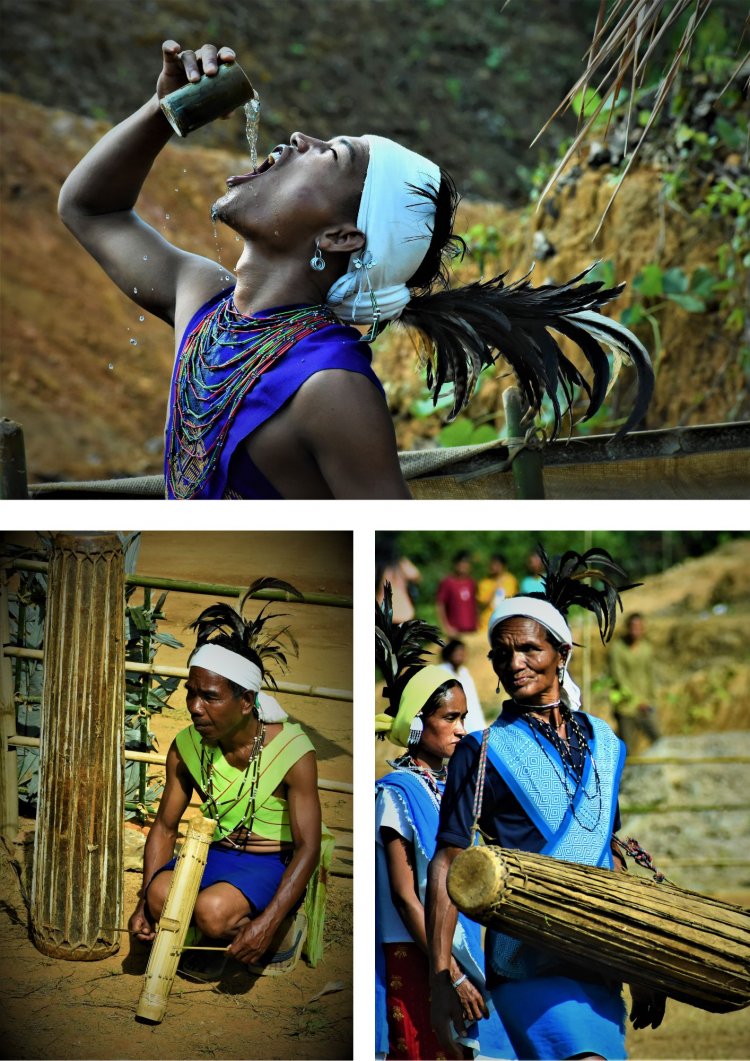 I was flabbergasted and stood as a meek spectator watching the whole event. The rhythmic beat of the drums soon gripped me and at the end, everyone joined the dancers with the troupes. I was really overwhelmed by the extravagant display. I had seen such a carnival at Hornbill Festival in Nagaland, but Wangala was on a much bigger scale and colorful. With less crowd more amusement and entertainment
I was flabbergasted and stood as a meek spectator watching the whole event. The rhythmic beat of the drums soon gripped me and at the end, everyone joined the dancers with the troupes. I was really overwhelmed by the extravagant display. I had seen such a carnival at Hornbill Festival in Nagaland, but Wangala was on a much bigger scale and colorful. With less crowd more amusement and entertainment
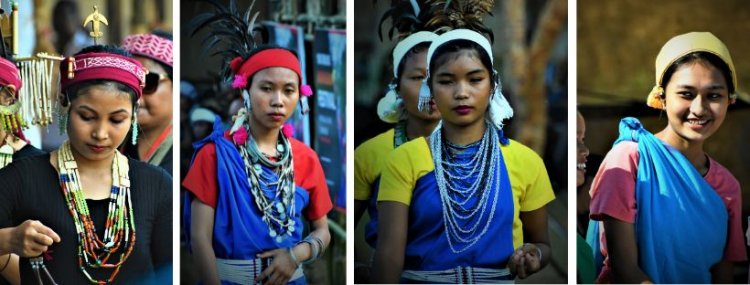
Garo Tribe in their colorful traditional local Attire

The final dance performance was something otherworldly and stole the show of visitors. I was transfixed until the whole arena and surrounding hills were ablaze in the setting sun. I saw the burning sun going down slowly and soon disappearing behind thick clouds into the horizon. It reminded me of a quote of –
- Kristen Butler -
“Sunsets are proof that no matter what happens, every day can end beautifully.”
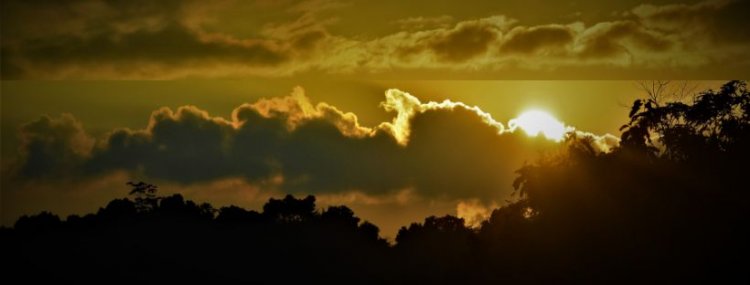
Where and When is the Wangala Festival celebrated?
The 100 Drums Wangala Festival is organized every year at Chibragre, 14 km from Tura town. Tura is the epicenter of Cultural activities and the administrative center of the Garo tribes as well as the headquarters of the West Garo Hills.
How to reach Tura?
The best way to reach Tura is from Guwahati which is about 220 km by road. You can hire private SUVs to reach on time. You can even reach Tura directly from Guwahati without touching Shillong. Since I was on the Garo hills tour, we reached the destination a day ahead of the event. Start early and be prepared to travel long distances, and bumpy roads, as it may be tiring too. I felt it was worth all the trouble. From Tura, Chibragre is 14 km and you can get local cabs on hire.
Where to stay at Tura
There are a handful of hotels at Tura for overnight stays. I stayed at a Guest house run by PWD, at Baghmara. We were fortunate to stay because of a vehicle breakdown. The homestay concept is just starting in remote villages. They are very basic in terms of stay and food. You need to plan well in advance, as everything get booked well in advance.
Places to visit around Tura
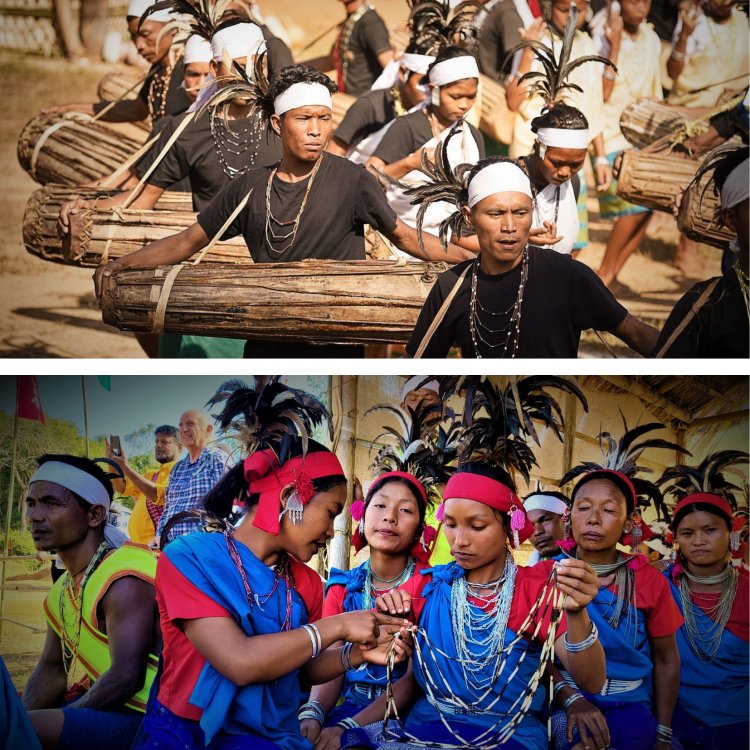
I will be discussing places visited in the chain of travel blogs related to it.
- Tura Peak
- Pelga Waterfalls
- Siju Caves
- Wari Chora
- Balpakram National Park
- Nokrek National Park
What is the best time to visit Tura
The best time to visit Tura is from late October to May. Don't ever plan in the rainy season. If you intend to witness the 100 Drums Wangala Festival, then you need to plan for November.
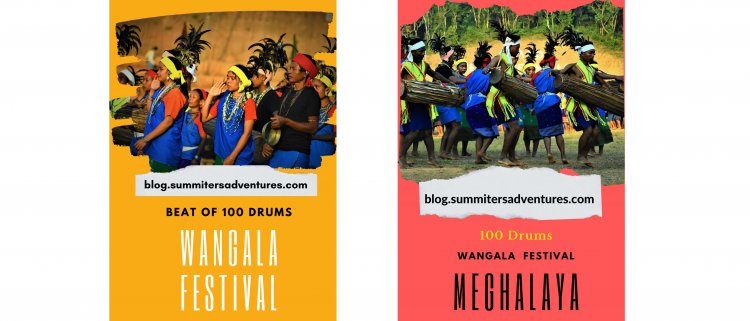
If you feel that the post is informative? Then please share your opinion by commenting below. And if you want to know more or need assistance with planning a trip, please send your requirement to summitersadventures@gmail.com









